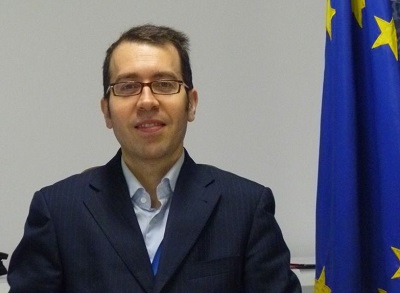Catalogue of Services: Helping EU countries catalogue and describe public services
Miguel Alvarez Rodriguez, Programme Manager, Interoperability Unit, DG Informatics, European Commission
Public service provision is at the centre of digital government. Citizens and businesses need to interact with public administrations in various personal or business situations from a birth certificate to pension benefits. To enable these interactions online, public authorities often develop portals, namely service catalogues to provide information about public services or digital government information systems to offer online public services. Usually, both service catalogues and information systems are based on ad-hoc and scattered public service models implemented with local, regional or national standards. In context of international collaboration and exchange of information, such models create interoperability issues with various consequences: information cannot be easily reconciled from multiple sources, it is not easy to find the right information or it follows a very administrative-oriented language.
Solution? Core Public Service Vocabulary Application Profile
To solve these issues, we defined a common metadata model Core Public Service Vocabulary Application Profile (CPSV-AP). The model was created under the Catalogue of Services action of the ISA² Programme. It is a result of the joint effort of different EU Member States and semantic experts from European public administrations to reduce interoperability barriers. Developed in 2013, the CPSV-AP allows public administrations to create and validate descriptions of public services in a user-centric way, grouped logically around business or life events. It reuses recognized metadata standards in one common metadata model, making sure public service descriptions are following well maintained and broadly used concepts.
We have also developed various complementary open source tools such as a web editor or a harvester to describe services and foster digital portals as one-stop-shops. Our team has conducted several studies on the benefits of exposing and sharing your digital catalogues through APIs, as well as on how to build chatbot services using well-structured models like the CPSV-AP.
Supporting policy areas like the Single Digital Gateway
The CPSV-AP can also contribute to the development of the so-called Single Digital Gateway. Established by a regulation adopted on 2 October 2018, the Single Digital Gateway will become a platform where citizens and businesses can find and access a list of services offered by public administrations all over the EU. It will provide a repository for links pointing to the concrete services.
To link-up the national catalogues for the Single Digital Gateway in an interoperable way, EU countries could automate the collection of the public service descriptions with a certain frequency. They could also enrich the basic information with a common metadata model that would harmonise the national catalogues in an interoperable manner. This month, we have started working with EU Member States to tailor the CPSV-AP to the needs of the Single Digital Gateway. The objective is to create a cross-border interoperability layer to enrich the information about the links to the services and their classifications according to Annex I and Annex II of the Regulation.
Webinar on 12 November and upcoming events
On 12 November 2019, we organised a webinar on this common data model and relevant classifications that gathered 70+ participants. We discussed for example the need for an interoperable metadata layer (the common metadata model), our proposed approach and objectives, and a few examples of how the solution could look like.
In the coming weeks, we will send out a communication addressing the comments and proposals mentioned in the webinar. You can find the recording, presentation and other information on Joinup. We welcome your input and comments on GitHub through issues.
On 21 January 2020, we will organise another webinar on tools in support of the Single Digital Gateway & CPSV-AP data models at 10-12 AM GMT+1. A month later, on 21 February 2020, the team will hold a workshop in Brussels on the Single Digital Gateway model and relevant classifications.
Get involved
Would like to stay up-to-date on the action? Join the mailing list!
Would you like to contribute to the further development of the CPSV AP and the Single Digital Gateway? Contact us at Miguel.ALVAREZ-RODRIGUEZ@ec.europa.eu.


